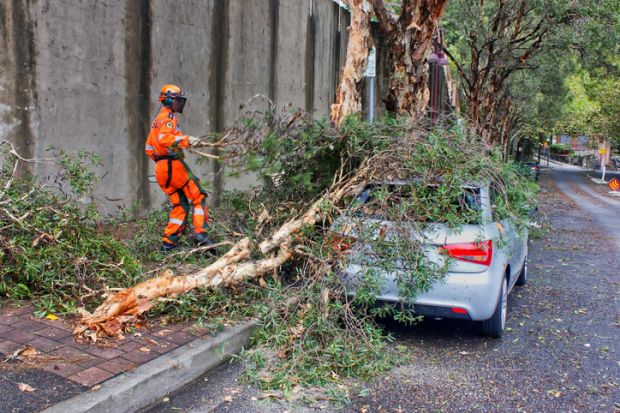The proportion of students at Australian universities hailing from overseas could plummet from more than one in four to less than one in 10, as the sector endures a traumatic makeover that destroys tens of thousands more jobs.
Financial analysts have offered a stark assessment of the sector’s prospects while border closures continue. Martin Foo, an economist with credit assessment agency S&P Global Ratings, said the mix of nationalities on Australian campuses could reach a “new normal” akin to countries like Germany, Norway and Japan.
Mr Foo, S&P’s Asia-Pacific associate director for sovereign and international public finance, said international students could slump to less than 10 per cent of the student base – down from a recent high-water mark of more than a quarter. “Universities probably would end up smaller. Operating surpluses would end up smaller,” he said.
“The transition, if there were one, would be very sharp and painful. We suspect we’d see a lot more job losses than the 17,000 that occurred last year.”
Most vulnerable would be smaller universities where international students’ fees constituted almost half of total revenue. “We don’t rate [those universities], so we don’t have full visibility over their books,” Mr Foo told a webinar. “But that’s where the crisis would hit hardest.”
The forum heard that the Australian sector was “highly rated” for its creditworthiness. But that was partly because some universities did not borrow much and had no need for credit ratings. The standing of other institutions was buoyed by an implicit assumption that the government would bail out universities in real financial strife.
“Given the universities’ role of fulfilling a public policy objective…we factor in federal government support into our ratings,” said fellow analyst Rebecca Hrvatin. “Universities will need more financing going forward, especially if their operating margins are crimped or weaker than expected and capital work is still to be undertaken.”
Mr Foo said even the assumed government safety net might not shield some institutions from higher borrowing costs if they turned to the finance markets. “If we were to rate some of these unrated universities, I suspect that there would be a wider spectrum. In the US…there is a spread all the way down to speculative grade ratings, although I’m not calling that in Australia yet.”
Colleague Anthony Walker said universities were not the only organisations reeling from the lack of foreign students. “Construction companies could suffer. [With] less students coming, you’re not going to have [such] a big demand for buildings.”
Individual investors were already suffering, with reports of 40 per cent reductions in the prices of apartments in student accommodation complexes in inner-city Melbourne and Sydney.
The “saving grace” for universities was that such complexes were often backed by “very large, sophisticated investors. Pension funds, asset managers, even sovereign wealth funds are investing in these for a 40-year pay-off. Those are the types of investors most able to go through this cycle and keep hold of those assets.”
But small businesses on campuses were doing it tough. “Hospitality, cafés, restaurants – anything that relies on international student traffic is suffering at the moment,” Mr Walker said.
Register to continue
Why register?
- Registration is free and only takes a moment
- Once registered, you can read 3 articles a month
- Sign up for our newsletter
Subscribe
Or subscribe for unlimited access to:
- Unlimited access to news, views, insights & reviews
- Digital editions
- Digital access to THE’s university and college rankings analysis
Already registered or a current subscriber? Login








